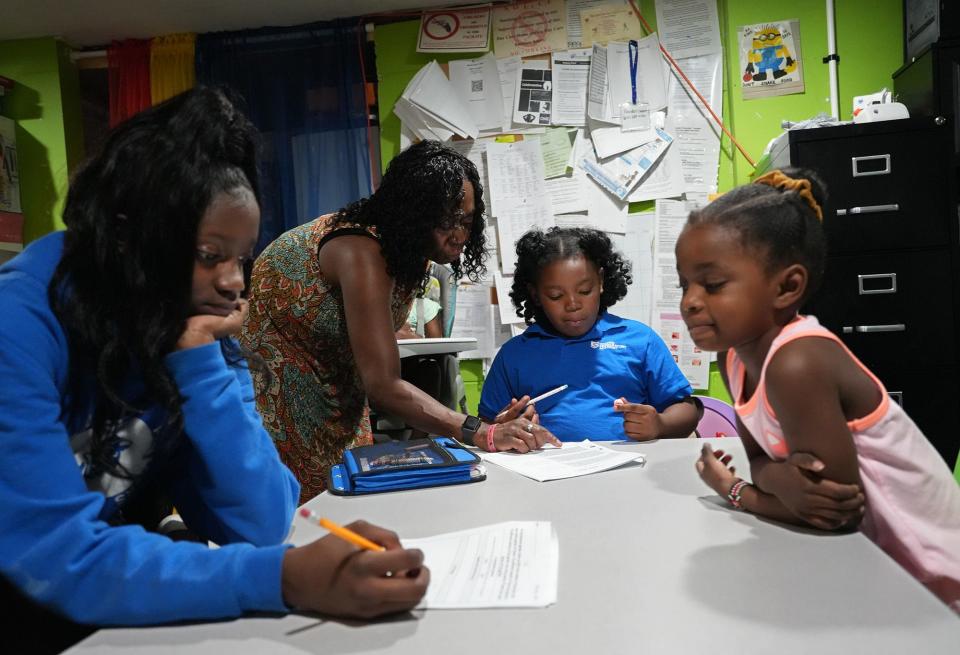'We’re not letting Washington off the hook.' Child care crisis lingers on | Opinion

Eric Karolak is CEO of Action for Children, the child care resource and referral agency for Central Ohio, which supports, empowers, and advocates for the adults who make the biggest impact on children’s lives — their parents, caregivers, and teachers.
The passage of the Inflation Reduction Act is cause for marvel. Its provisions on climate change and health care will positively affect every American household. Rightfully, members of Congress who voted for it can claim a remarkable achievement on the campaign trail this fall.
Its passage without a single dollar for child care is also a marvel, but one of a different kind.
More:Prescription drugs, taxes, climate change: What the Inflation Reduction Act will mean for you
Until recently, this legislative package included a $400 billion investment in child care that would have assured most families paid no more than 7% of their income for child care. In fact, the bill started out in early 2021 as the embodiment of the “American Families Plan,” and when it was introduced last fall as “Build Back Better,” child care was second only to its historic climate provisions.
But all of that was missing when the Inflation Reduction Act passed. We went from #SaveChildCare to #WheresChildCare.
Removing bill text unfortunately doesn’t remove the child care crisis.
Across America, child care programs have closed or shrunken in size. Providers and parents alike are facing higher costs, waiting lists and impossible decisions about how to continue, including: “How can I work if I can’t find child care I can actually afford?” “How do I keep caring for families when I’m not earning enough from child care to make ends meet for my own family?”
More:Opinion: "Hard working families shouldn’t need to spend their whole income on child care"
Since 1990, the price of child care has increased 214%, a far higher pace than other major household expenses and far below the increase in average family income. Right here in Central Ohio, data curated by Action for Children show the average price of infant care in a center is $13,100 per year — more than in-state tuition at The Ohio State University.
The data also shows that nearly 4 in 10 child care programs had already, or were planning to, raise tuition as a result ofstaff shortages and rising costs.
“I am exhausted. My staff members are exhausted. I am seriously rethinking how long I can keep doing this,” one center director told us recently. “Sadly, there's no one in the pipeline to take my place.”
In Central Ohio, 245 child care programs have closed — more than 1 in 6 — since the pandemic began. The child care crisis also adds to workforce shortages as working parents scramble to find affordable care.
Child care professionals — the workforce behind the workforce — are enduring often unseen struggles compounded by the twin systems of racism and sexism, which have combined to keep average hourly pay in Ohio under $11 for this overwhelmingly female and disproportionately Black and brown workforce. Nationwide, one-third are food insecure, and half qualify for some form of assistance.

This is a quiet crisis, most often borne one working mom at a time. One young family at a time. Every working parent has to “figure it out.” Every family child care provider and child care center classroom teacher has to “find a way” to continue with wages so low, for work so demanding
Some local leaders understand we can’t wait for Washington to act.
Earlier this year, the City of Columbus and Franklin County joined resources to launch Franklin County RISE. The program offers signing bonuses and rental assistance to early childhood educators, awards to child care programs for meeting quality standards or offering care during nontraditional hours, and 750 scholarships of up to $10,000 annually for families struggling to afford child care.
For more information about Franklin County RISE and assistance in locating child care programs, contact visit actionforchildren.orgor 614-224-0222.
While the passage of the climate and health bill is indeed a “big deal,” so is the continued child care crisis facing American families, businesses and communities. Child care advocates aren’t done, and we’re not letting Washington off the hook.
“The future is now,” people say, and for child care, that’s the truth. Today’s preschool children are the class of 2037. Their experience in families stressed to somehow make it all work, in child care centers struggling to make ends meet, will affect their readiness for school and their opportunities for success well into the future. We can’t afford to give up on them now.
Eric Karolak is CEO of Action for Children, the child care resource and referral agency for Central Ohio, which supports, empowers, and advocates for the adults who make the biggest impact on children’s lives — their parents, caregivers, and teachers.
This article originally appeared on The Columbus Dispatch: Opinion: Families, providers still struggling with child care crisis

